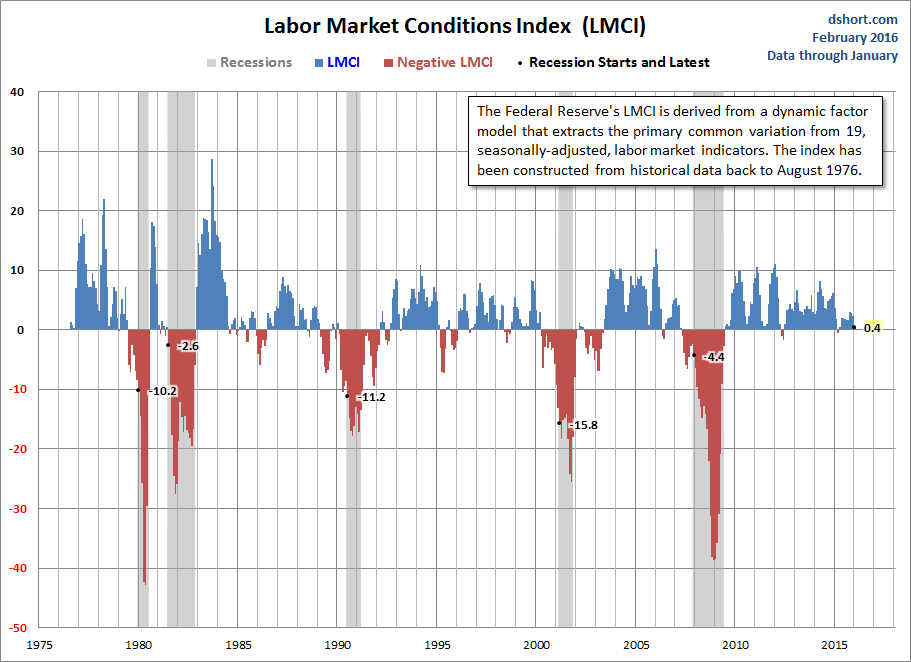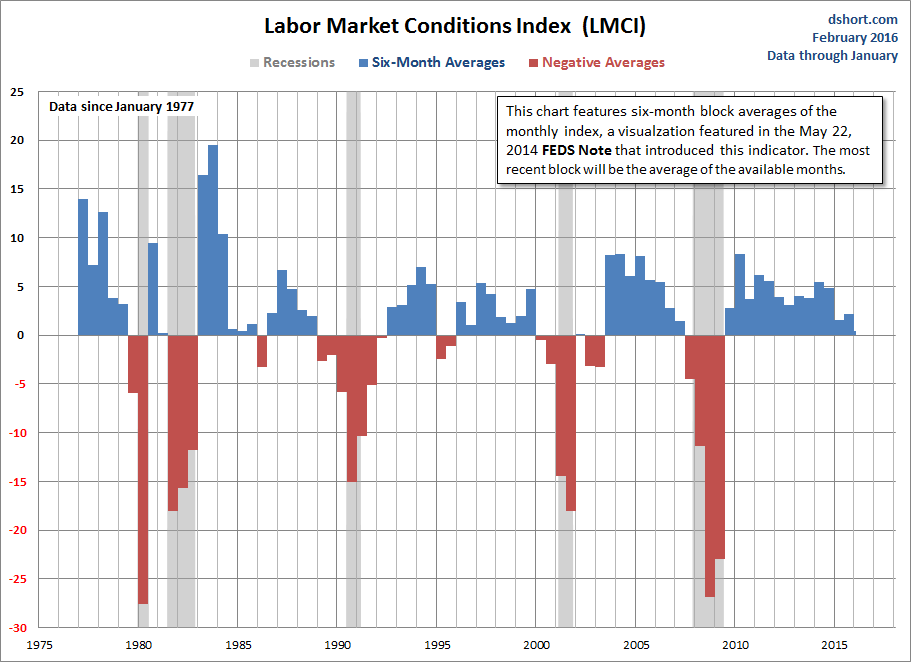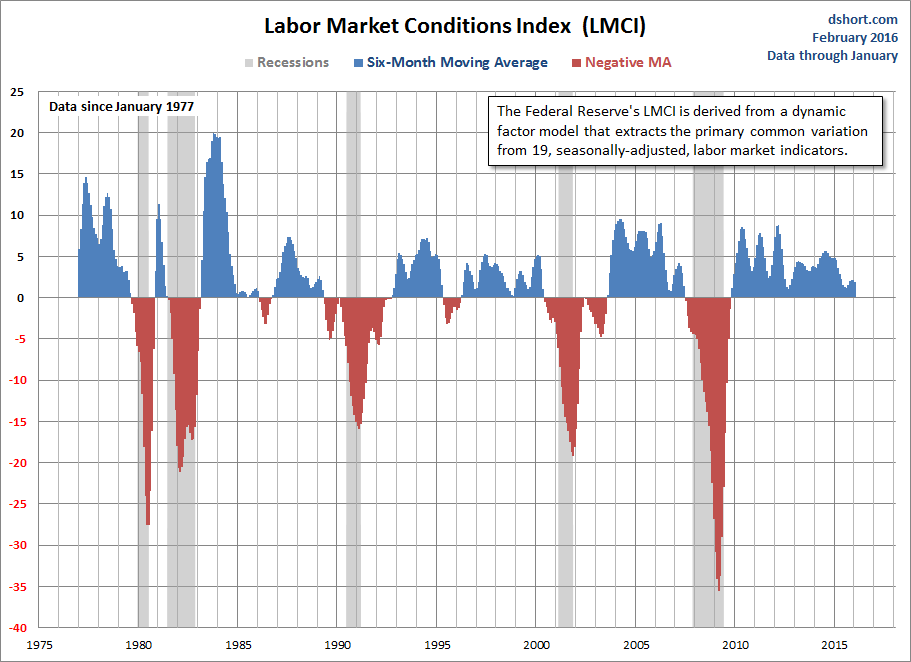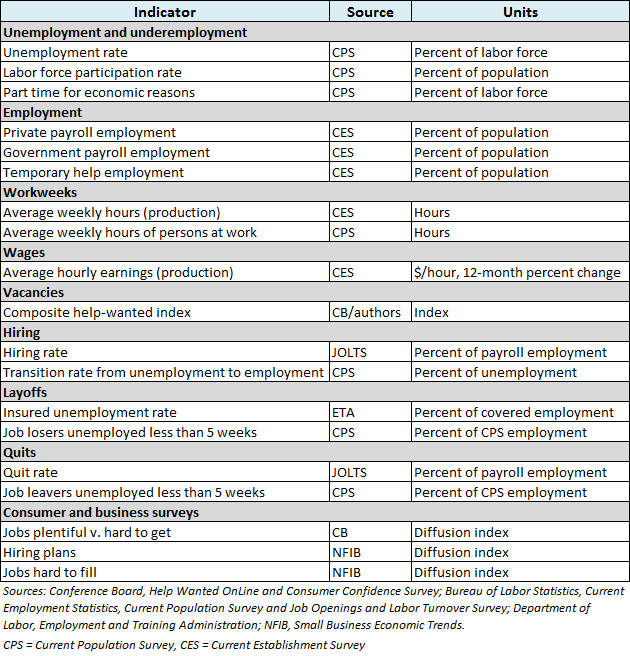The Labor Market Conditions Index (LMCI) is a relatively recent indicator developed by Federal Reserve economists to assess changes in the labor market conditions. It is a dynamic factor model of labor market indicators, essentially a diffusion index subject to extensive revisions based on nineteen underlying indicators in nine broad categories (see the table at the bottom for details). Today's release of the January data came in at 0.4, down from a revised 2.3 in December. Extensive revisions were made to the series, including the last 10 of 12 months.
The indicator, designed to illustrate expansion and contraction of labor market conditions, was initially announced in May 2014, but the data series was constructed back to August 1976. Here is a linear view of the complete LMCI. We've highlighted recessions with callouts for its value the month recessions begin and for the latest index value.

As we readily see, with the exception of the second half of the double-dip recession in the early 1980, sustained contractions in this indicator is a rather long leading indicator for recessions. It is more useful as a general gauge of employment health. Note that in the most recent FOMC minutes for December 15-16, the phrase "labor market conditions" was used seven times. Maximum employment, after all, is one of the Fed's twin mandates.
Interestingly enough, the FEDS Notes article announcing the indicator doesn't chart the complete series with monthly granularity. Instead, the authors use a column chart to show blocks of six-month averages for the two halves of each calendar year since 1977. This approach further supports the use of the indicator as a general gauge of health. Here is our larger version of the same graphic model.

We couldn't resist the urge to create a chart of the more conventional six-month moving average of the indicator. Note that we've adjusted the vertical axis to capture the depth of the contraction during the last recession.

Below is a table identifying the nine categories and 19 underlying indicators in the LMCI.

A Footnote on Revisions
The FRED repository notes for this indicator has a lengthy explanation for the high incidence of revisions for this index. Here is an excerpt.
Users of the LMCI should take note that the entire history of the LMCI may revise each month. Three sources contribute to such revisions.
The first source is new data that were not available at the time of the employment report....
The second source of revision comes from revisions to existing data....
The third source of revision is inherent to the model. The LMCI is derived from the Kalman smoother, meaning that the estimate of the index in any particular month is the model's best assessment given all past and future observations.
For the further details on revisions, vist this FRED page and click on the Notes tab.
